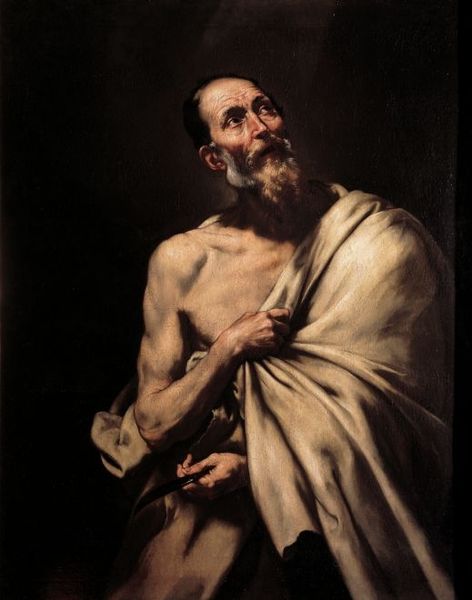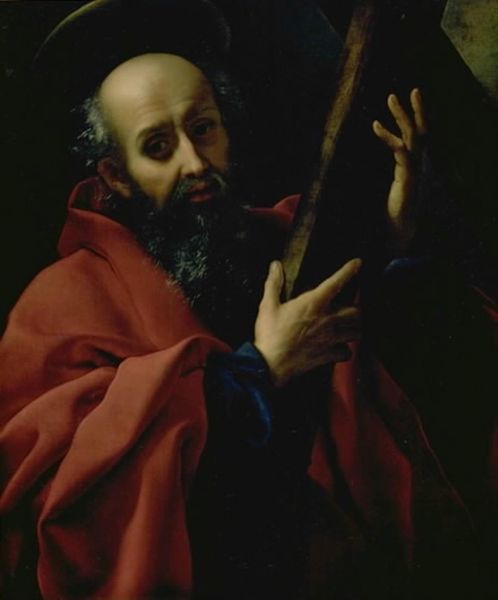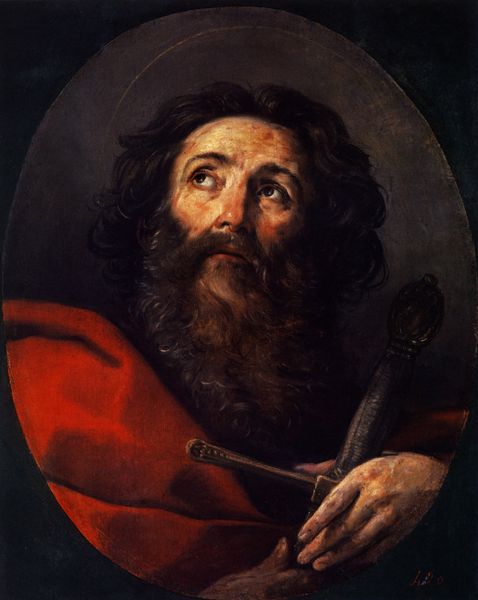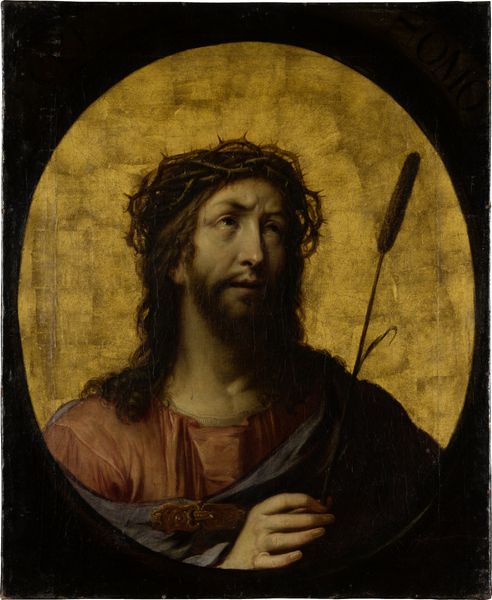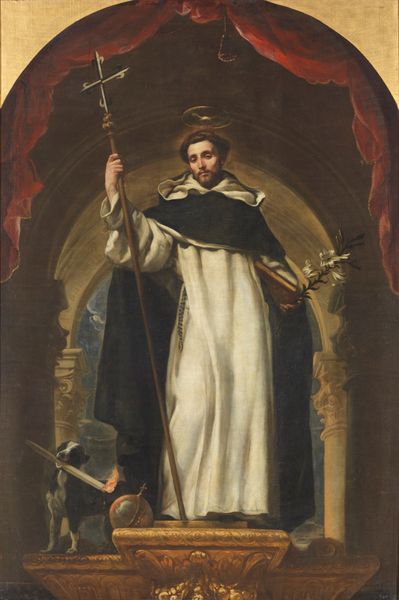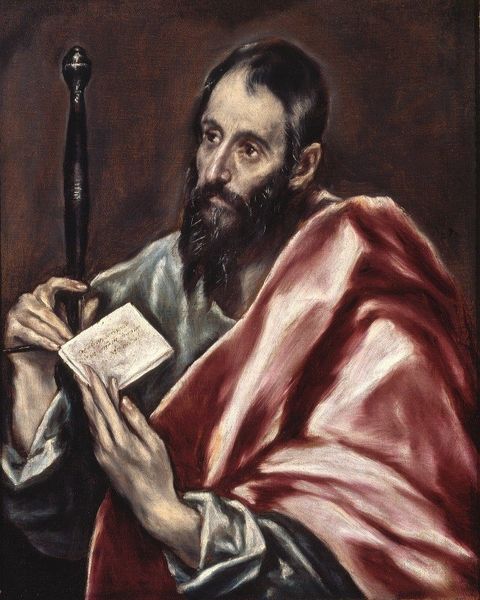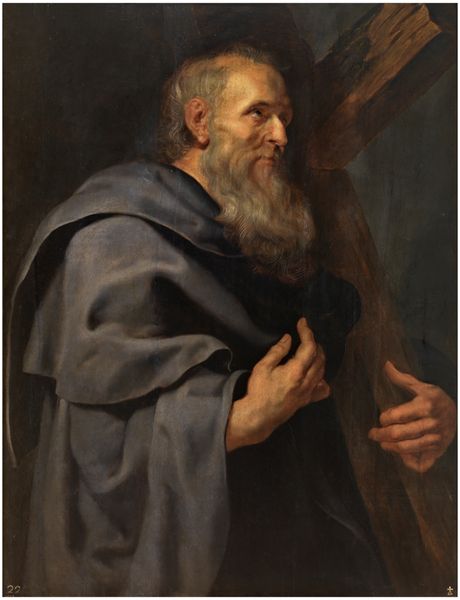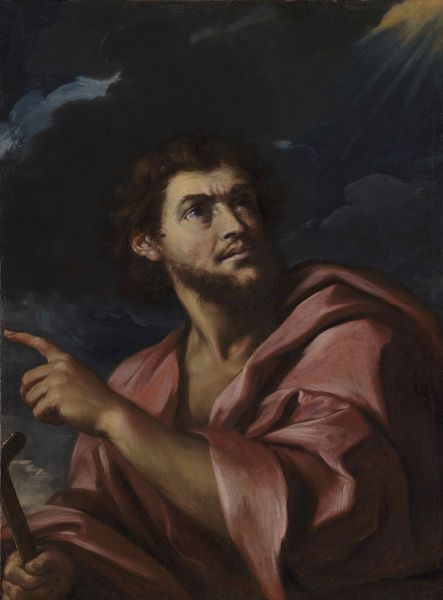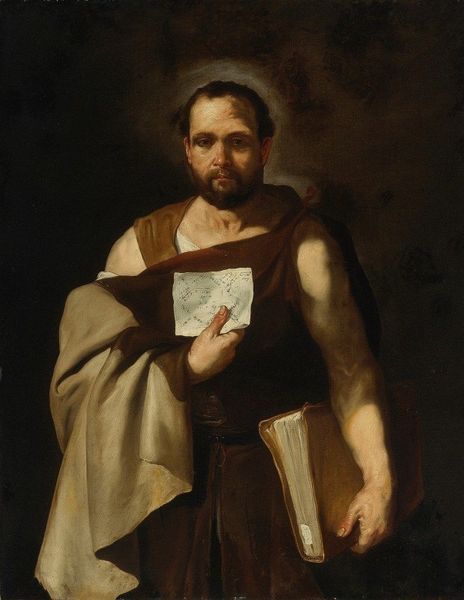
oil-paint
#
portrait
#
baroque
#
oil-paint
#
oil painting
#
history-painting
Dimensions: 133.1 x 99.1 cm
Copyright: Public Domain
Editor: This is Jusepe de Ribera's "Saint James the Greater," painted around 1615-1616, and rendered in oil. I am immediately struck by how human Saint James looks. He's idealized, sure, but in a relatable way. What draws your attention when you view this piece? Curator: I’m immediately thinking about how Ribera is positioning James within the broader sociopolitical context of the Counter-Reformation. How does the artist utilize James, typically viewed as a symbol of strength and pilgrimage, to convey very specific ideas about power and faith during that era? Editor: Could you expand on that idea a bit more? Curator: Absolutely. Consider the choice to depict James not as a conquering hero but as a thoughtful, almost contemplative figure. The use of tenebrism, the strong contrast between light and dark, creates a sense of drama and introspection. It makes me question, is Ribera trying to instill the important notion of humble service and personal reflection that resonated with reformist sensibilities, away from worldly extravagance? What do you think? Editor: I suppose I hadn't really considered it as a move away from opulence, but now that you mention it, the dark background emphasizes this message of contemplation and humble devotion, as opposed to being this triumphant, untouchable figure. Curator: And see how that simple shift speaks volumes about how art operates not in a vacuum but in active engagement with shifting ideologies. Editor: It is all much more than I initially thought when considering artistic intention and societal pressures. Curator: Indeed. Ribera's "Saint James the Greater" invites us to interrogate power, faith, and identity and opens avenues for considering art’s crucial role in shaping cultural narratives.
Comments
stadelmuseum almost 2 years ago
⋮
Saint James the Greater is an early work by the Spanish painter Jusepe de Ribera, who worked in Italy. He painted this picture in around 1615/16, towards the end of his stay in Rome. Ribera, who is among the first and most important Caravaggisti, further developed Caravaggio’s revolutionary new art with his own distinctive approach.Here we come face to face with a monumental half-figure with sculptural presence. The apostle stands in front of a dark wall and is illuminated by a cone of light entering from the top left of the picture. The insignia that is pinned to his robe gleams in the light and serves as another reference to Saint James’s pilgrimage, apart from his pilgrim’s staff. His bright red cloak has a voluminous quality, its folds forming into a range of hills and valleys.The gentleness of the saint’s inclined head creates a subtle contrast with the power expressed in his physique. This ambivalence between outward appearance and inner epiphany, between presence and rapture identifies the painting as a sophisticated masterpiece in Ribera’s early work.
Join the conversation
Join millions of artists and users on Artera today and experience the ultimate creative platform.


